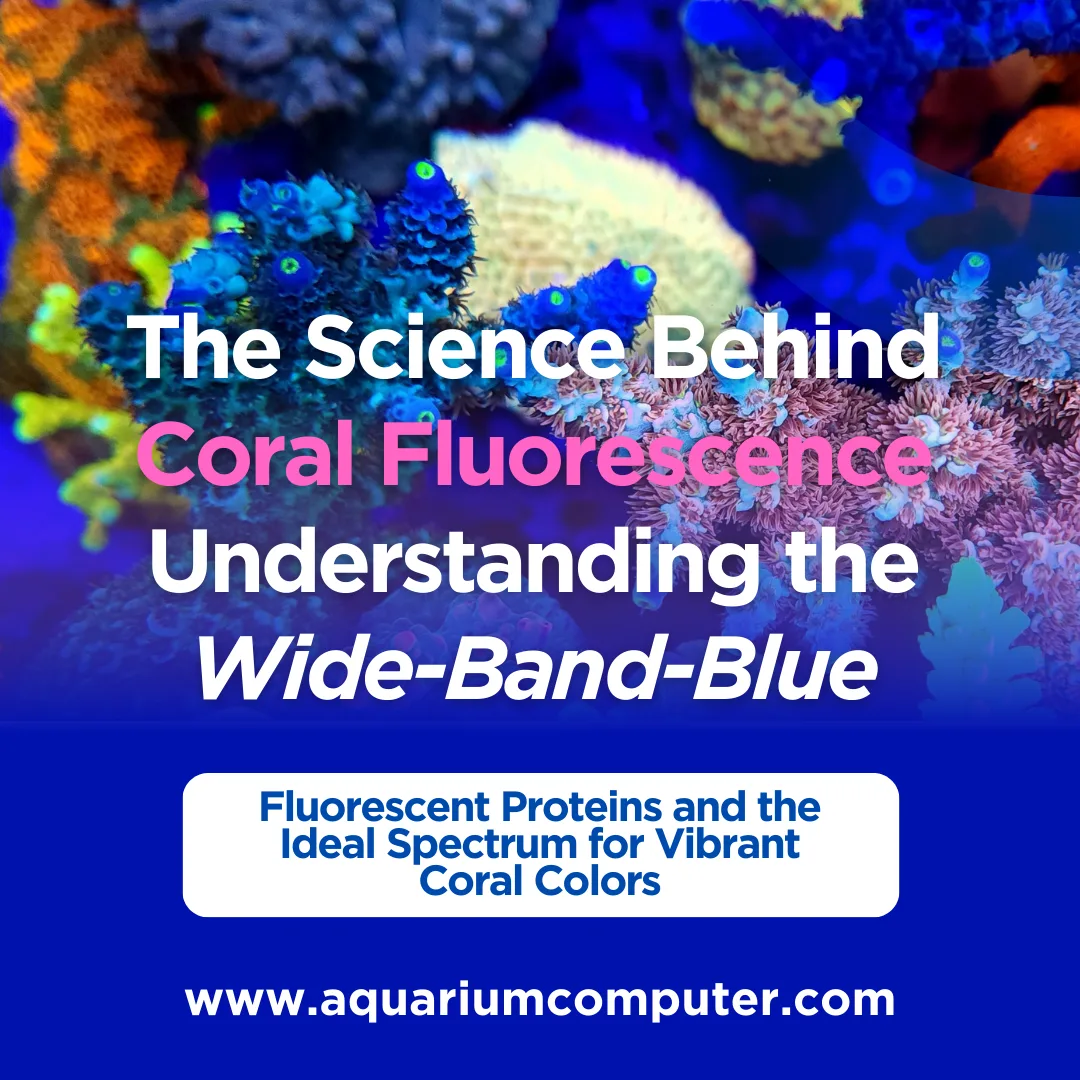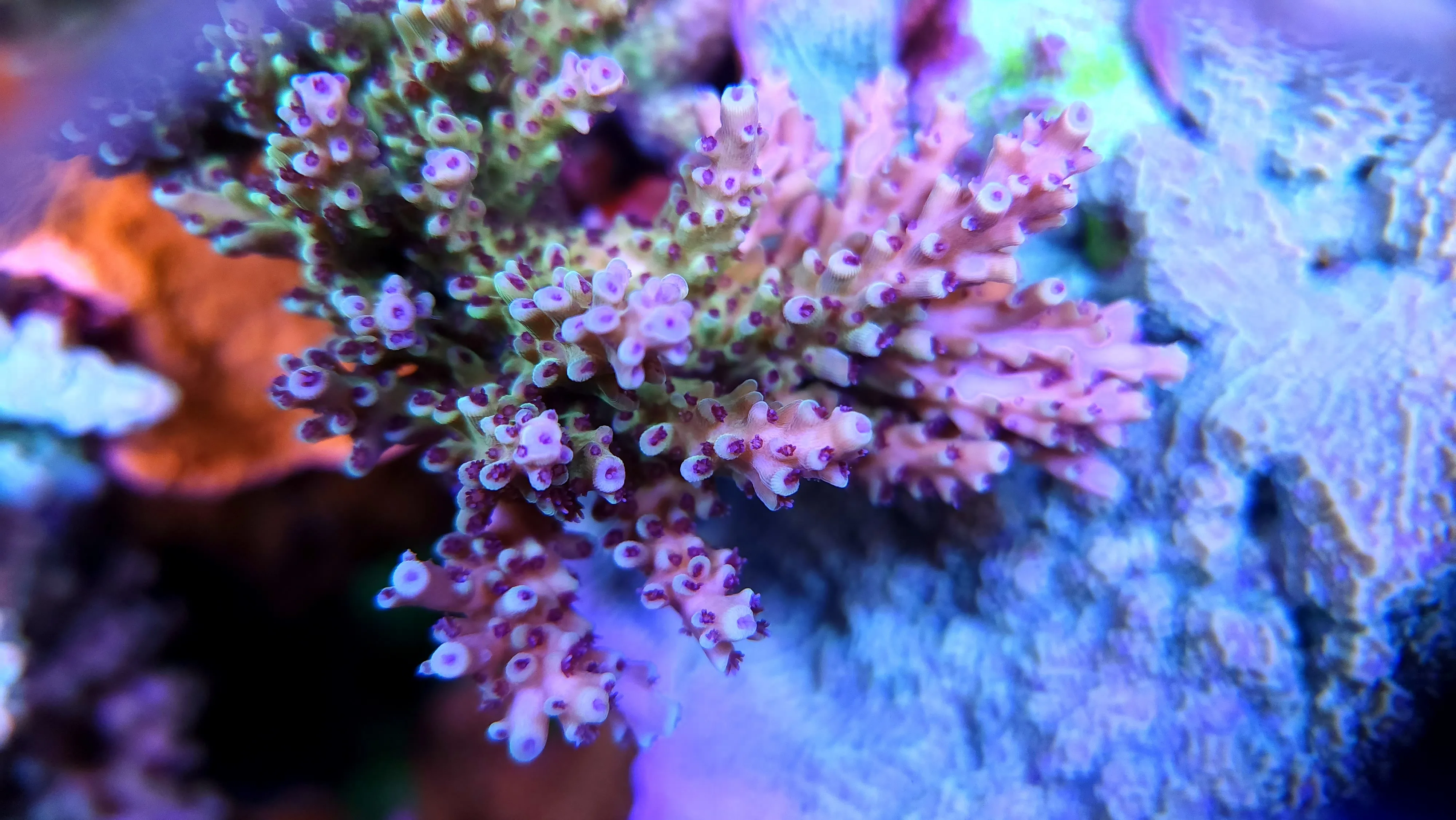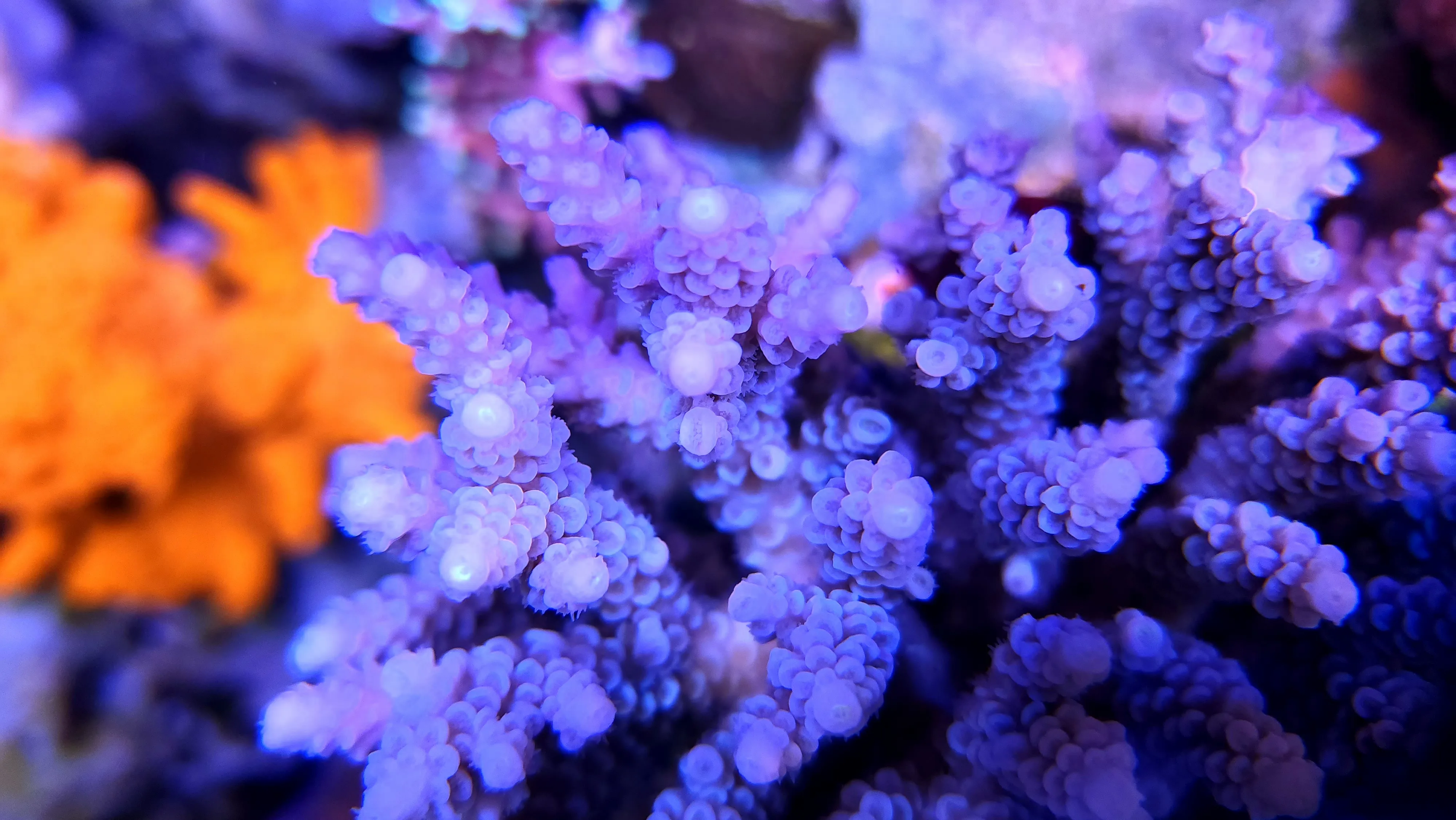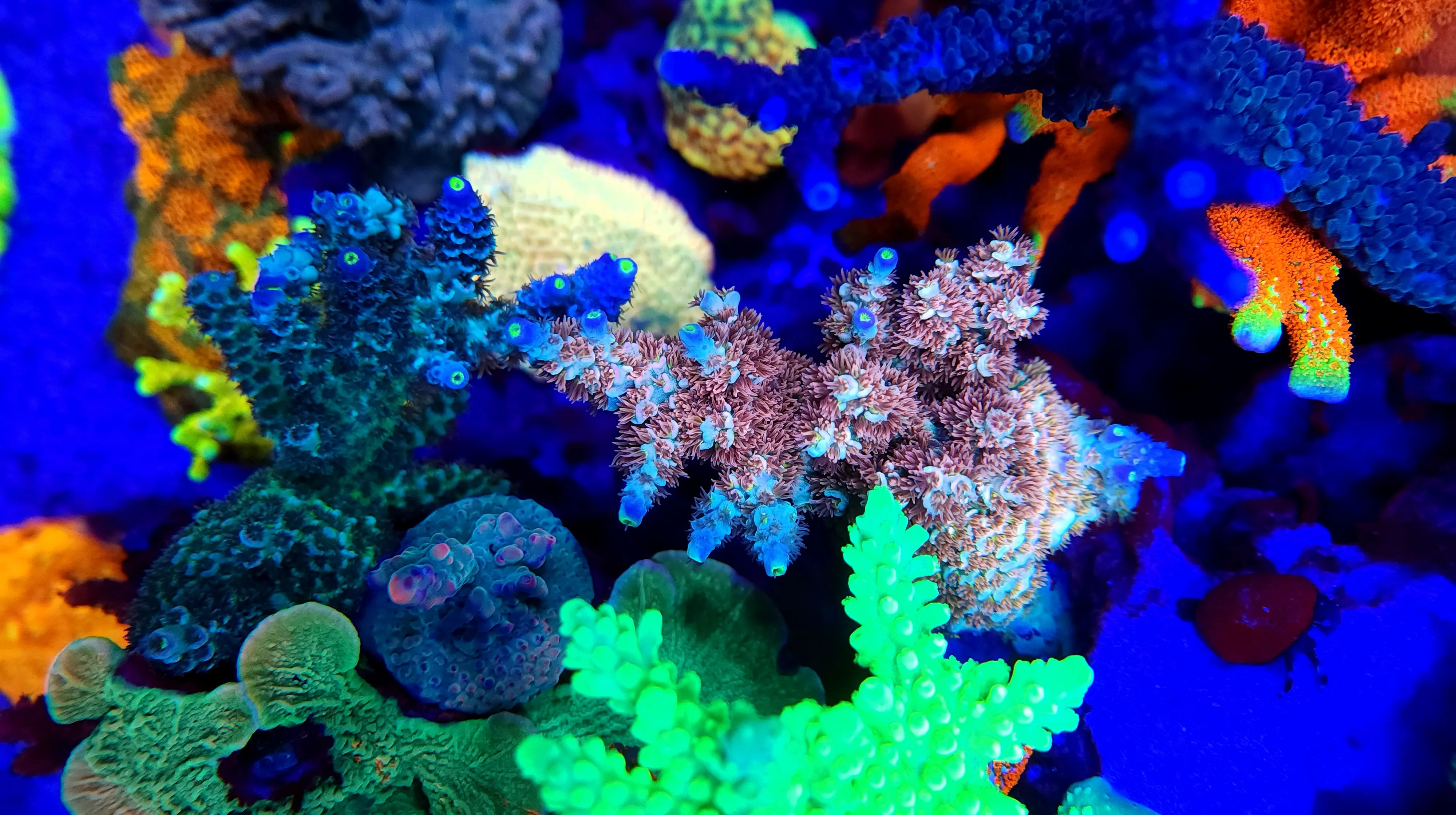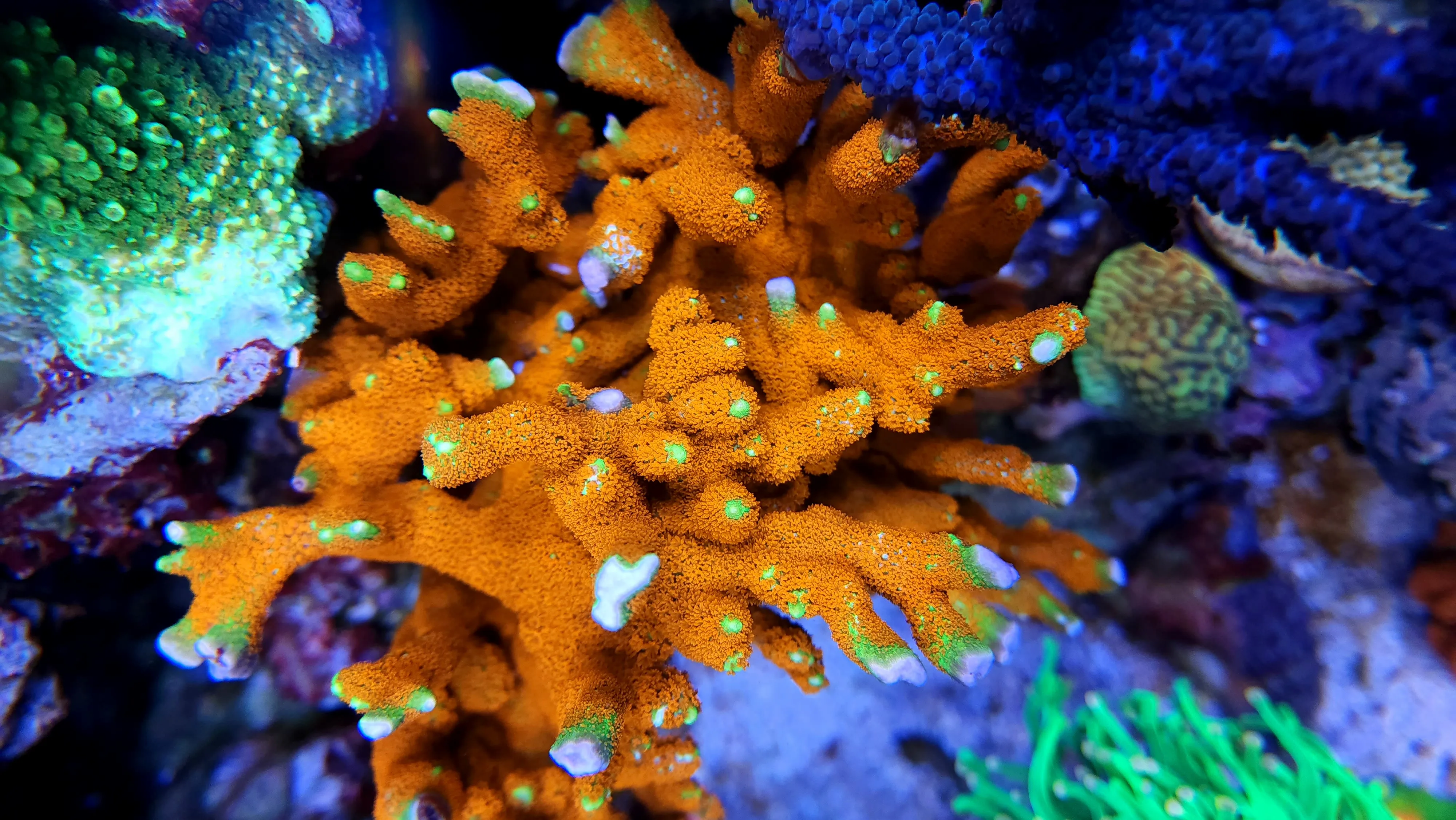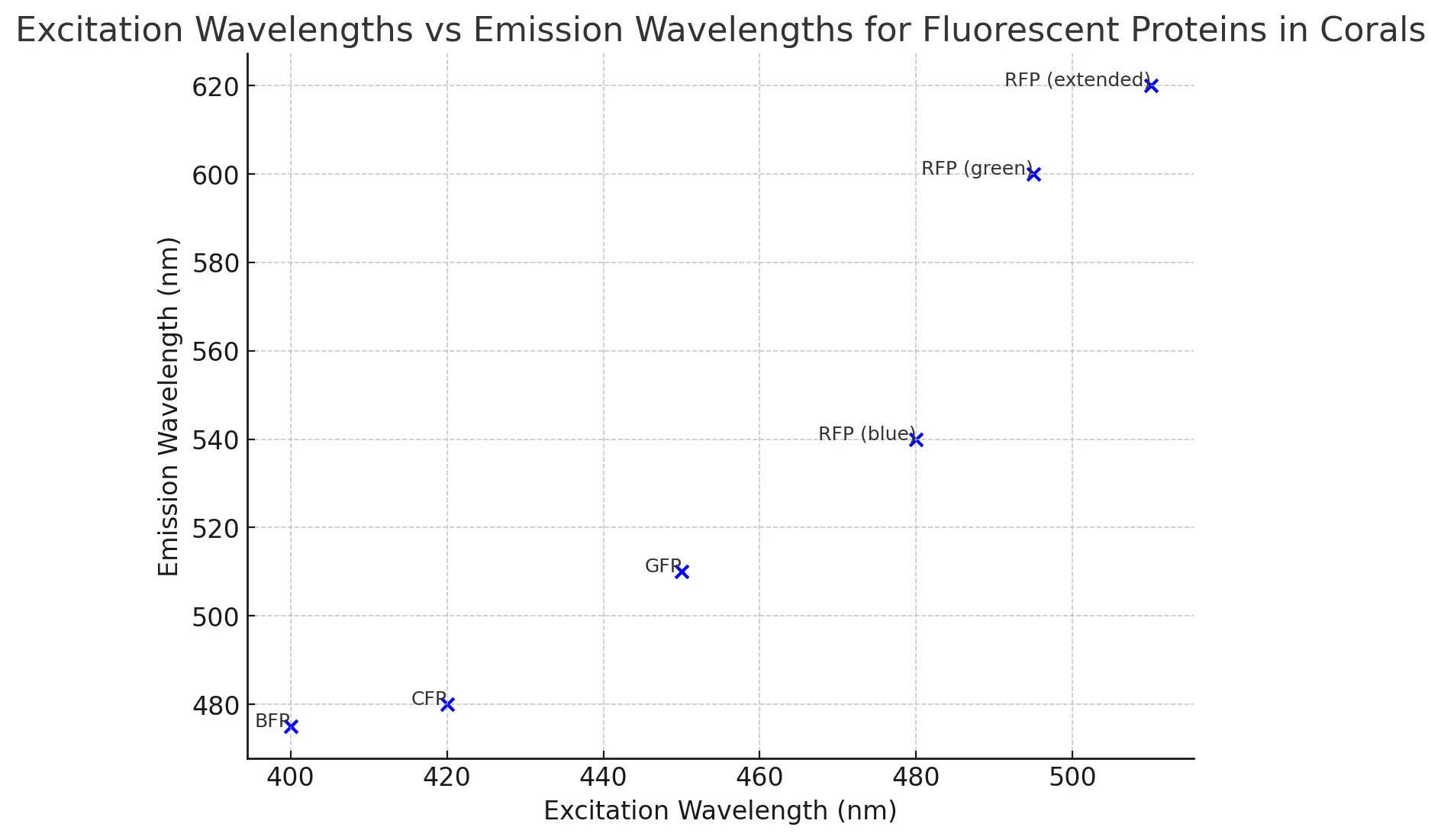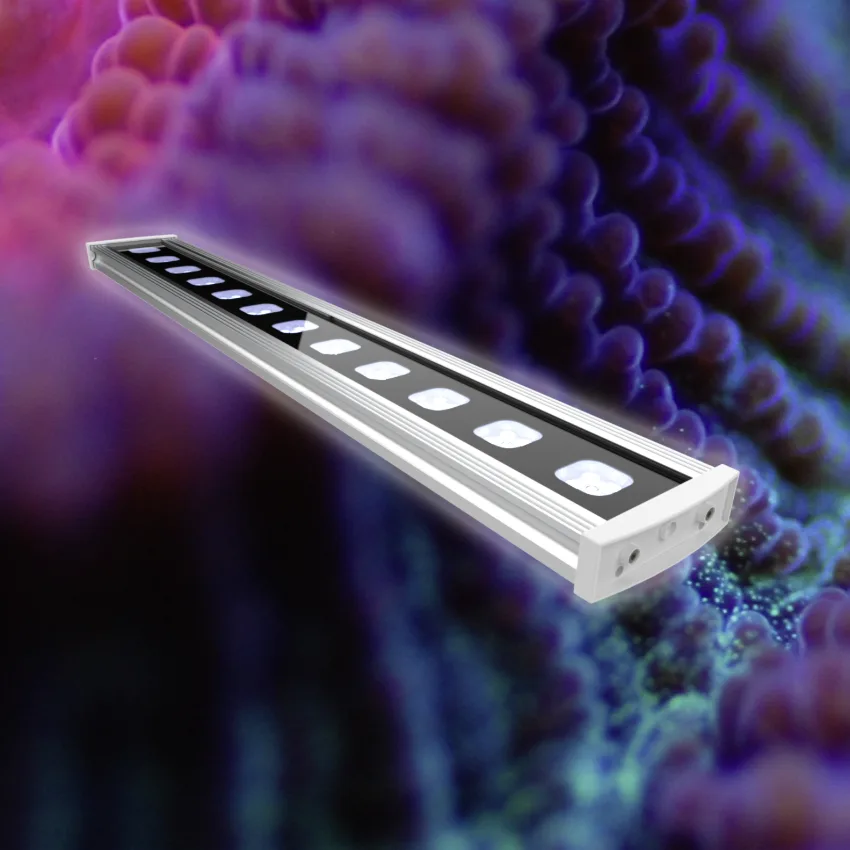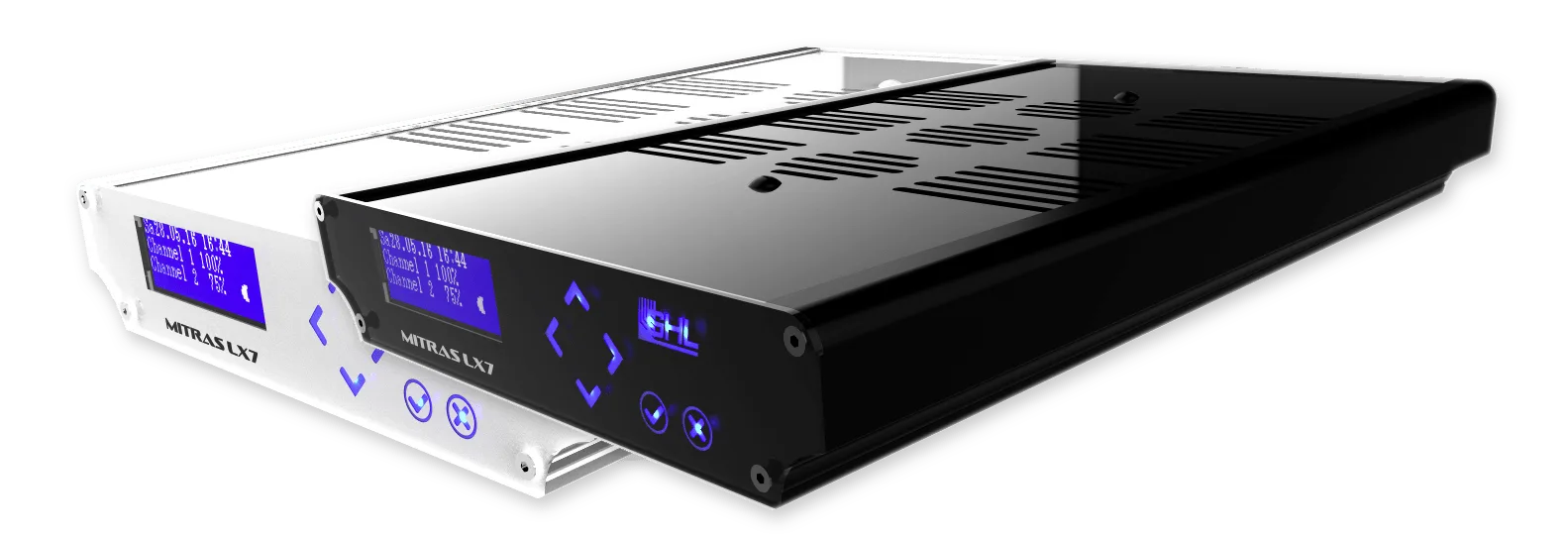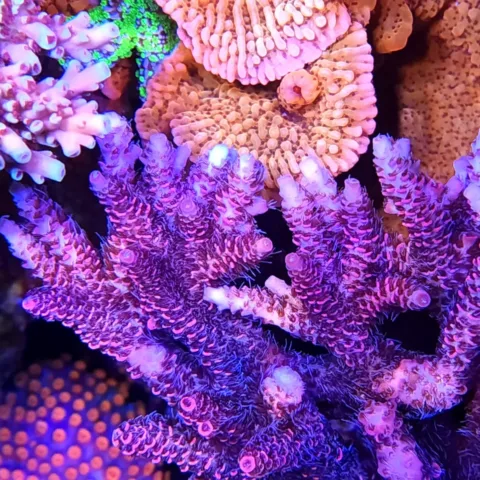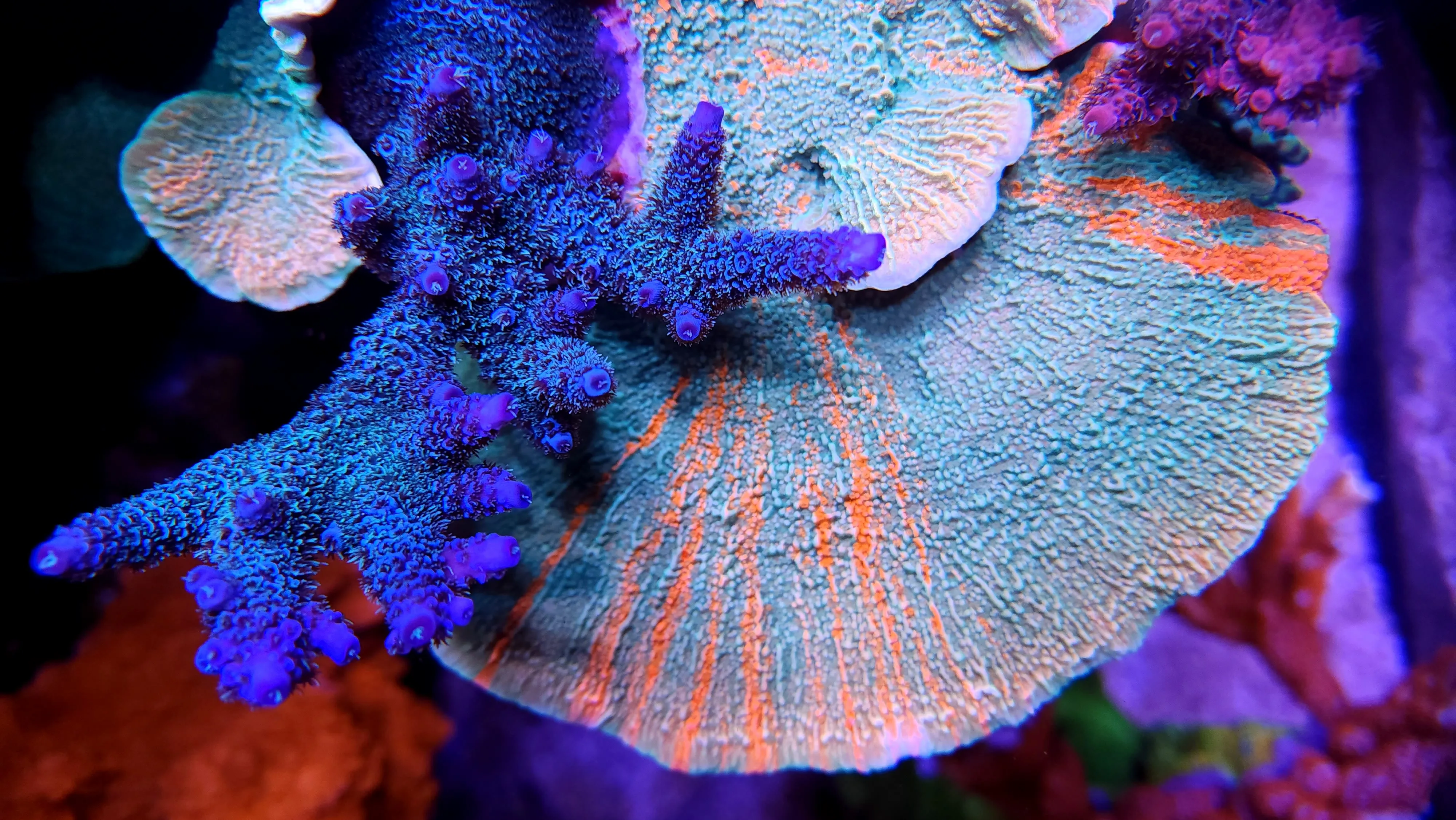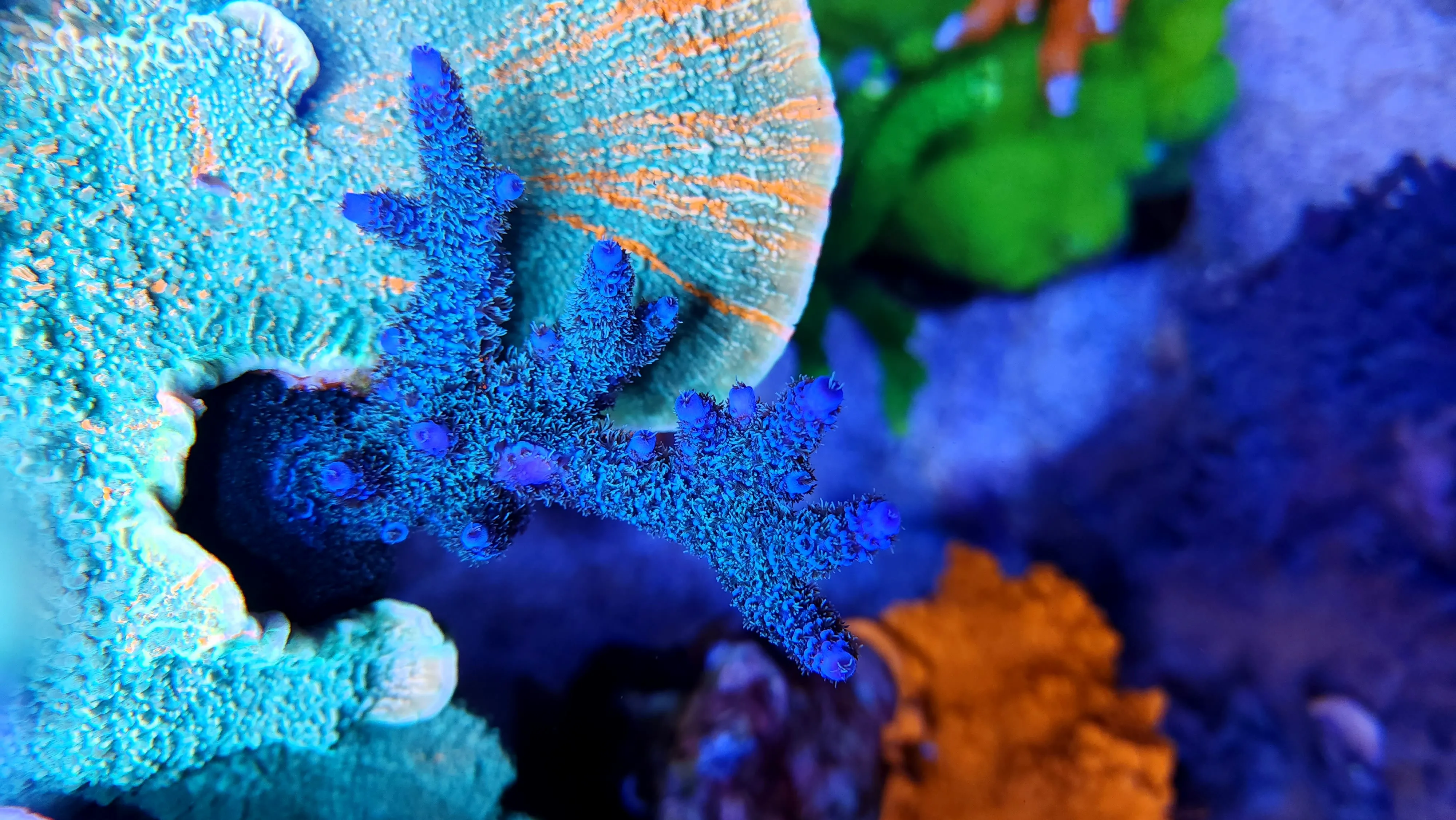Fluorescent Proteins and the Ideal Spectrum for Vibrant Coral Colors
Have you ever wondered why corals glow with such vibrant, otherworldly colors under aquarium lights? The secret lies in coral fluorescence, a fascinating process that involves special proteins that absorb and re-emit light in stunning hues. Whether you’re a hobbyist, coral breeder, or professional, understanding how this phenomenon works is key to maintaining vibrant, healthy corals in your system.
Coral fluorescence is driven by proteins such as blue fluorescent proteins (BFPs), cyan fluorescent proteins (CFPs), green fluorescent proteins (GFPs), and red fluorescent proteins (RFPs). These proteins absorb specific light wavelengths and re-emit light at longer wavelengths, giving corals their striking colors. Each protein is excited by different wavelengths of light, which is why lighting plays a critical role in bringing out the full spectrum of coral fluorescence.
For example, BFPs and CFPs require UV light in the range of 400–420 nm for excitation, while GFPs are best stimulated by blue light (450–495 nm), and RFPs respond to both blue and green light (495–510 nm). To ensure that all these proteins are excited and emit their characteristic colors, lighting within the 400–500 nm range, known as the “Wide-Band-Blue,” is essential.
This wide spectrum is crucial in replicating natural underwater conditions in your aquarium, maximizing coral fluorescence and supporting coral health. Beyond their visual appeal, fluorescent proteins play key biological roles in corals, including protection against harmful UV rays and enhancing photosynthesis by reflecting light to symbiotic algae (zooxanthellae).
For aquarists, ensuring proper lighting within this wide blue band can make a significant difference in coral appearance and health. Advanced LED lighting systems that cover the full spectrum from 390–510 nm are ideal for bringing out the best in your coral displays, ensuring vibrant coloration and optimal growth.
Whether you’re just starting or are a seasoned coral breeder, investing in the right light and understanding how it affects your corals’ fluorescence can help you achieve stunning, thriving coral reefs in your own aquarium. Make sure to provide the proper lighting environment, and you’ll see your corals fluoresce in full, dazzling color!
Fluorescence Process in Coral Proteins
Fluorescence in corals occurs when certain proteins, known as fluorescent proteins (FPs), absorb light at one wavelength and then re-emit it at a longer wavelength. The internal mechanism behind this is based on the chemical structure of the protein. At the core of each fluorescent protein is a chromophore—a group of atoms that can absorb and emit light.
When light of a specific wavelength (excitation light) hits the chromophore, it causes the electrons in the chromophore to move to a higher energy state. This process is called excitation. The protein then undergoes a slight structural change, stabilizing the excited state. After a very short time (nanoseconds), the electrons lose some energy and return to their normal state, a process called emission. This released energy is emitted as light at a longer wavelength than the absorbed light, which is what we observe as fluorescence.
The difference between the absorbed and emitted light is called the Stokes shift, and it explains why fluorescent proteins in corals absorb higher-energy light (such as blue or UV) and emit lower-energy light (such as green, red, or cyan).
The Right Illumination
To achieve vibrant coral fluorescence and optimal health in your aquarium, proper lighting is essential. GHL’s Mitras Lightbar 3, Mitras LX 7 and LX 7 IL series provide the ideal solution with their advanced LED technology and customizable spectra. These fixtures are specifically designed to cover the full Wide-Band-Blue range (390–510 nm), crucial for exciting all fluorescent proteins in corals.
Here is a chart that illustrates the relationship between the excitation wavelengths and the emission wavelengths for fluorescent proteins in corals. As you can see, each fluorescent protein responds to specific wavelengths of light for excitation, and they emit light at longer wavelengths, producing the vibrant fluorescence we observe in corals.
This visualization helps to understand how proper lighting — like that provided by GHL’s Mitras Lightbar 3, Mitras LX 7 and LX 7 IL series — can cover the required excitation spectrum, leading to full and vibrant coral fluorescence.
- The Mitras Lightbar 3 is perfect for users seeking high-performance, energy-efficient lighting with a focus on uniform light distribution. The water-proof fixture can be used under a canopy or above an open aquarium. It uses GHL’s proprietary Total Reflection and Diffusion Technology (TRDT™), ensuring excellent color blending and high output across the needed light spectrum. This makes it ideal for aquarists who want to boost coral fluorescence while maintaining healthy growth.
- The pendant light Mitras LX 7 series for open aquariums is also a professional-grade LED fixture. With precise spectral control, these lights allow for fine-tuning to meet the specific needs of your corals, ensuring optimal fluorescence and growth. The water-proof LX 7 IL Series is also available for industrial and research applications, delivering even more power for large-scale or specialized coral cultivation setups.
Mitras Lightbar 3
Each of these products integrates seamlessly with GHL’s controller systems, offering comprehensive lighting management for aquariums of all sizes. Whether you’re a hobbyist or a professional, these lighting solutions provide the tools needed to maximize coral health and vibrancy. Explore more about the Mitras Lightbar 3, Mitras LX 7, and LX 7 IL series to bring out the best in your aquarium system.
Mitras LX7
In conclusion, understanding the science behind coral fluorescence and using the right lighting is key to unlocking the full beauty and health potential of your corals. Whether you’re a hobbyist or a professional, selecting high-quality lighting systems like the GHL illumination systems will ensure that your corals receive the precise spectrum they need to thrive and display their most vibrant colors. With the proper light setup, you’ll not only enhance the aesthetic appeal of your aquarium but also support the long-term well-being of your coral reef ecosystem.
Invest in the right lighting, and watch your corals truly come to life!
Coral photos courtesy of Vinny Altamirano. Photos taken under GHL Mitras LX7 lighting.

